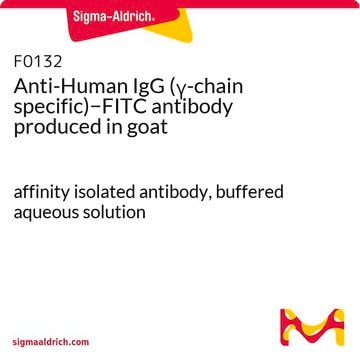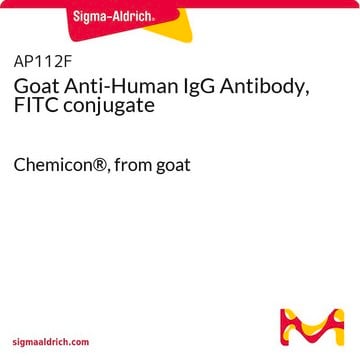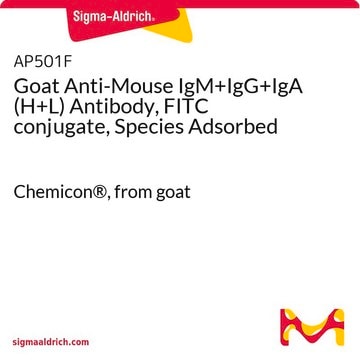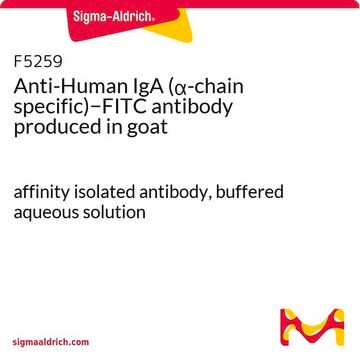F6380
Anti-Human IgG (γ-chain specific)−FITC antibody produced in goat
IgG fraction of antiserum, buffered aqueous solution
About This Item
Produtos recomendados
fonte biológica
goat
conjugado
FITC conjugate
forma do anticorpo
IgG fraction of antiserum
tipo de produto de anticorpo
secondary antibodies
clone
polyclonal
forma
buffered aqueous solution
técnica(s)
direct immunofluorescence: 1:32
temperatura de armazenamento
2-8°C
modificação pós-traducional do alvo
unmodified
Procurando produtos similares? Visita Guia de comparação de produtos
Descrição geral
Anti-Human IgG (γ-chain specific)-FITC antibody is specific for human IgG subclasses. Whole antiserum is fractionated and then further purified by ion exchange chromatography to provide the IgG fraction of antiserum. Goat anti-human IgG is conjugated to Sigma Fluorescein Isothiocyanate (FITC).
Imunogênio
Aplicação
forma física
Exoneração de responsabilidade
Not finding the right product?
Try our Ferramenta de seleção de produtos.
Código de classe de armazenamento
10 - Combustible liquids
Ponto de fulgor (°F)
Not applicable
Ponto de fulgor (°C)
Not applicable
Certificados de análise (COA)
Busque Certificados de análise (COA) digitando o Número do Lote do produto. Os números de lote e remessa podem ser encontrados no rótulo de um produto após a palavra “Lot” ou “Batch”.
Já possui este produto?
Encontre a documentação dos produtos que você adquiriu recentemente na biblioteca de documentos.
Nossa equipe de cientistas tem experiência em todas as áreas de pesquisa, incluindo Life Sciences, ciência de materiais, síntese química, cromatografia, química analítica e muitas outras.
Entre em contato com a assistência técnica






